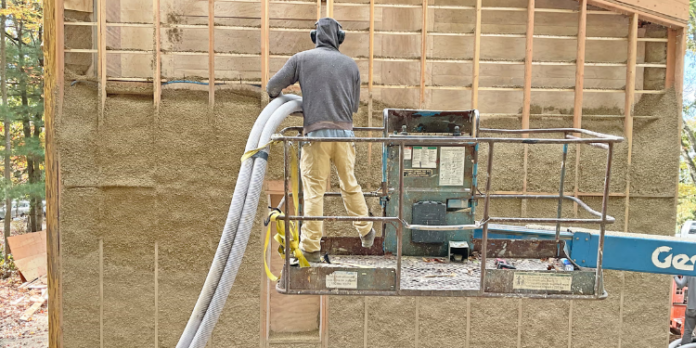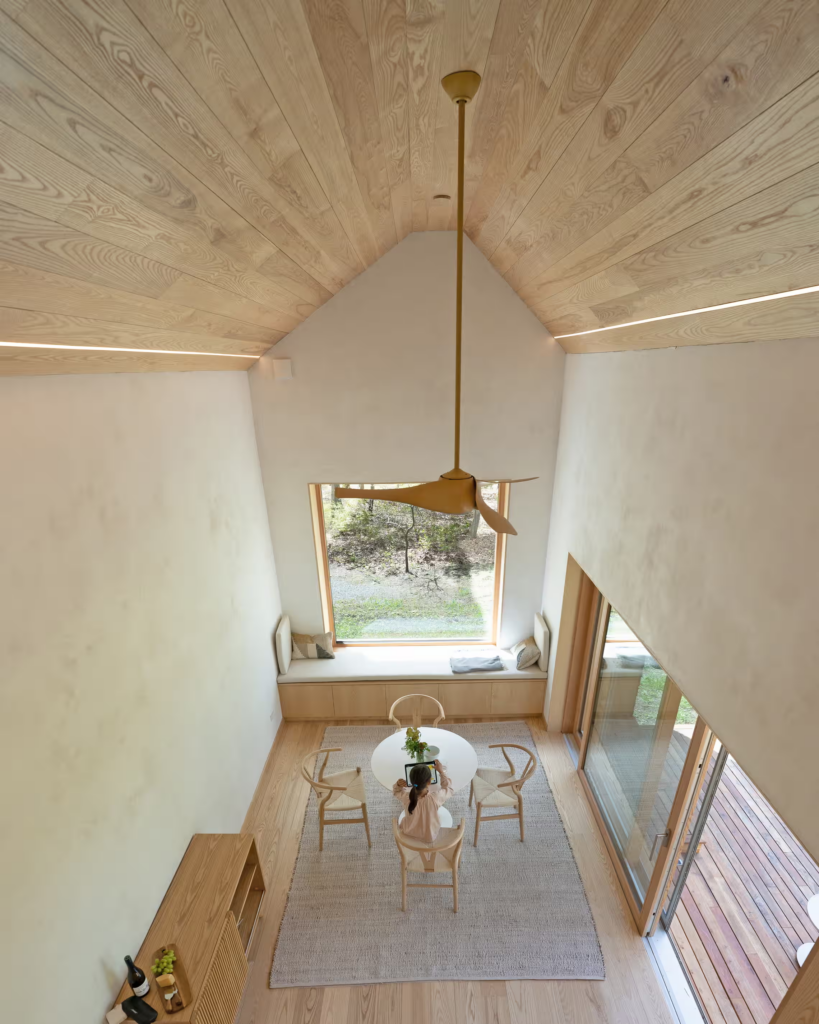Proponents of the material tout its non-toxic and mould, fire and infestation-resistant properties
Cannabis sativa, the plant of the thousand and one molecules, has a long and expansive reputation – as a folk medicine, a source of textile fibre for clothes, for making rope or plugging holes in ships.
But now cannabis – or specifically its non-psychoactive variant, hemp – is being touted for something greater still: building blocks for housing that may avoid some of the environmental, logistic and economic downsides of concrete.
The cement industry is responsible for about 8% of planet-warming carbon dioxide emissions, alongside problems created by unyielding surfaces and low insulation, or R-value, properties. The search for large-scale alternatives has so far yielded few results, but on a small scale there are intriguing possibilities, including the use of hemp mixed with lime to create low-carbon, more climate healthy building materials.
“There’s an enormous growth potential in the US for hemp fibre used for building and insulation,” said Kaja Kühl, an urban designer and the founder of youarethecity, a design and building practice based in Brooklyn, New York. “Hemp was only legalised in 2018, but now industrial hemp is following the first wave of CBD and cannabis.”
Last summer, Kühl, who is part of a Columbia University initiative to help apply environmental initiatives to the Hudson Valley, completed two cottages on a farm in upstate New York using the hemp-lime, known commercially as hempcrete, in their construction. The blocks are not load-bearing, so the material is used primarily for thermally efficient insulation and interior walls.
Using prefabricated hempcrete bricks and timber to reduce carbon impact, the two rental cottages, designed in keeping with upstate farmland architecture, are located on the Wally Farms experimental farming incubator and designed to demonstrate sustainable building techniques.
Kühl describes a fledgling network of advocates, designers and fabricators that regard bio-based building materials as a way to dramatically reduce the embodied or upfront carbon footprint of materials that, in some instances, account for 80% of its carbon lifecycle.
The potential for hemp (a strain of Cannabis sativa) as a building material has been known for centuries, because it is a material that combines fast cultivation with strength.
But more recently its ability to capture more than twice its own weight in carbon – twice as fast as traditional forestry – has come into focus. By some estimates, hemp can capture up to 15 tonnes of CO2 per hectare, through photosynthesis. Hemp cultivation taking up only 25% of the world’s agricultural land used for dairy and livestock would close the UN emissions gap of 23 gigatons of CO2 annually.
“Choosing materials that sequester a lot of carbon before they become construction materials can be very beneficial in this quest to get to carbon-neutral by 2050,” Kühl said, pointing out that the hemp that is used is the hurd, from the inner stem, and not the bark that is used for paper or rope.
According to the Rapid Transition Alliance, it was first developed in France in the 1980s as a method of adding thermal performance to medieval timber frame buildings that has its roots in pre-Christian Gaul. Proponents of using hemp in construction (they tend to prefer the term hemp-lime to hempcrete because it contains no concrete) talk up its non-toxic and mould, fire and infestation-resistant properties.
Most attractive, said Tim White of Texas Healthy Homes, is that no chemicals are added. “Modern construction industries are a toxic cocktail,” White said, “and many of our customers are looking for a non-toxic house.”
“This material is almost carbon-negative,” he said. “There are no petrochemicals involved at all, so once we get rid of the toxin-load of the materials, we can make healthy homes for people to live in – and you’ve loaded your deck to make a healthy indoor environment built using historic building materials with a track record that’s thousands of years old.”
Using a monolithic structure (the walls have no cavities, like an adobe or earthen home), White sources hemp from South Bend Industrial Hemp in Great Bend, Kansas. The company opened the first facility of its kind in 2021 after the cultivation of hemp was legalised in 2018.
But the industry is still in its infancy in the US and much is having to be learned anew. Like marijuana, hemp was in effect outlawed in 1937, and efforts to restart the industry come long after memory of cultivation and processing, or a ready market, have been lost.
“Everyone wants us to be 50 years down the road with systems and education,” White said. “But we’re finding that this knowledge of historic materials doesn’t exist any more.”
In Europe, however, things are a little further along. In the UK, for example, the Haverhill hemp houses in Suffolk are a couple of decades old, while in France the Pierre Chevet sports centre, near Paris, was recently constructed using hempcrete. According to estimates, the global market for hempcrete is projected to grow at 16% a year from 2021 to 2028, with the overall global market for green building materials projected to reach a value of $419bn by 2026.
But the hemp-lime industry will need to compete with the established construction industry, for which cost and control are central concerns. White is now running classes in natural building techniques in an effort to move the industry forward. For Texas Healthy Homes, the purpose is to build homes that look like any other – and not indulge in futuristic, Arcosanti-style or geodesic dome constructions – but with adobe floors, no drywall, paint or calk.
“I understand where the market is,” he said. “You’re going to want to sell this thing, so you’re going to want flat walls. I don’t want anyone coming to me in 10 years saying they’re trying to sell their home. Well, yeah dude, make it flat …”
Last week, Tao Climate, a company that uses cutting-edge technology to grow hemp at scale, announced a partnership with Ukraine’s Hemp Technology to use hempcrete for housing for 170 internally displaced people and war orphans in Lviv.
The project, a finalist entry in Elon Musk’s XPRIZE for carbon removal that comes with a $100m incentive prize, is estimated to remove more than 1,000 tonnes of CO2.
“We have proven that our model works under the harshest of circumstances,” Tao Climate’s Felix Roick said in a statement. “What we have achieved in Ukraine is remarkable. We’re effectively removing CO2 from the atmosphere while enabling sustainable housing for millions of people worldwide. It’s a win-win for the planet and humanity.”









